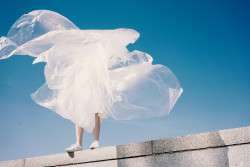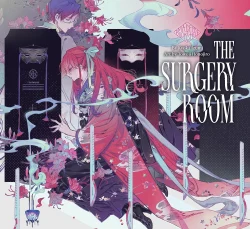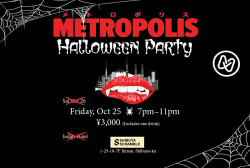
August 28, 2009
Taoism Art
The yin and yang of art are little in evidence at this uninspiring show
By Metropolis
Originally published on metropolis.co.jp on August 2009
Center: Matara Shin, Edo period (1617), hanging scroll, color on silk, 119 x 58cm Rinno-ji temple, Tochigi
Right: Laozi, Muqi, Southern Song dynasty (13th century), hanging scroll, ink on paper, 88.9 x 33.5cm Okayama Prefectural Museum of Art” width=”650″ height=”410″ class=”size-full wp-image-99″ />
Left: Yuhuangdadi (“The Jade Emperor”), Qing dynasty (17th century), hanging scroll, color on silk, 140 x 78cm Private collection
Center: Matara Shin, Edo period (1617), hanging scroll, color on silk, 119 x 58cm Rinno-ji temple, Tochigi
Right: Laozi, Muqi, Southern Song dynasty (13th century), hanging scroll, ink on paper, 88.9 x 33.5cm Okayama Prefectural Museum of Art
Taoism is a belief system that emphasizes the power surrounding and flowing through all things. Historically, it is one of the most important strands in Oriental culture, having had a major influence on Chinese, Korean and Japanese thought. Taoism is also identified with concepts like spontaneity, effortless effect and reverence for nature. So imagine my excitement when I heard that a major show of Taoist art at the Mitsui Memorial Museum would bring together items from temples and museums across Japan as well as abroad. Somehow I convinced myself that artists influenced by the energy and freedom of the Tao would have created beautiful, free-flowing, vibrant artworks. Sadly, my expectations were disappointed.
If one were to judge Taoism by the works at this exhibition, the image that would emerge would not be very complimentary. Rather than the rippling brushstrokes, innovative compositions and vibrant colors that Taoist principles prefigure, the various scrolls, prints and other artworks on display are, for the most part, characterized by vapid lines, rigid design and drab, faded colors.
For example, a 14th-century Nambokucho period hanging scroll depicting a constellation mandala is, apart from the golden halos highlighting the personifications of the stars, sunk in the murkiest gloom. Enough remains visible, however, to reassure us that we are not missing any great masterpiece. Like many of the older scroll-based artworks, this work is heavily creased, cracked and damaged by the simple process of having been rolled and unrolled countless times.
The decision taken hundreds of years ago by Oriental artists to store the majority of their creative endeavors using the same system later developed in the West to dispense toilet paper has, sadly, been responsible for the deterioration of a great deal of Asiatic art. At times, this show becomes solely a demonstration of this regrettable fact.
But even setting wear and tear to one side, the vast majority of the works here are simply aesthetically unappealing. Partly this is because many of them were created as charts, invocations and talismans rather than artworks, with their designs strictly circumscribed by intransigent convention. Yet in cases where the artist clearly had more freedom, such as an expansive hanging scroll of the Jade Emperor from the 17th century, there is still a dull harmony and rigidity to the design that seems at odds with the supposed fluidity of Taoism.
There are, of course, exceptions. These include a delightful ink scroll by the Japanese master Sesshu Toyo, depicting the Yan Emperor, the legendary father of Chinese agriculture. Crackling with energy and artistic confidence, this work gives you an inkling of what a truly Taoist style of art would look like.
Much less satisfying is a Southern Song dynasty ink scroll depicting Laozi, the supposed founder of Taoism. Dating from the 13th century, this work (by a Chinese Zen Buddhist monk named Muqi) has the spontaneity of Zen painting, but, perhaps because the artist was depicting the founder of a rival belief system, the result is a rather ugly scrawl that leaves Laozi looking bestial and sinister.
One problem this highlights, however, is that Taoism was never really a separate belief system on its own, but constantly mixed with Buddhism, Confucianism and other beliefs. This lack of purity and organizational cohesion resulted in Taoism becoming a catch-all for any myth, metaphysical nonsense or esoteric bunkum doing the rounds. From a philosophy of attuning the mind to the power and variety of nature, it more typically became a calcified code of rituals and superstitions aimed at unlocking “secrets” like immortality, placating angry deities, and promising riches through serendipity. Unfortunately, it is this corrupted form of Taoism, rather than the original essence of “the Way,” that seems to inform most of the art at this exhibition.
Through September 6, Mitsui Memorial Museum of Art. See exhibition listings (Ginza/Kyobashi/Tokyo) for details.







